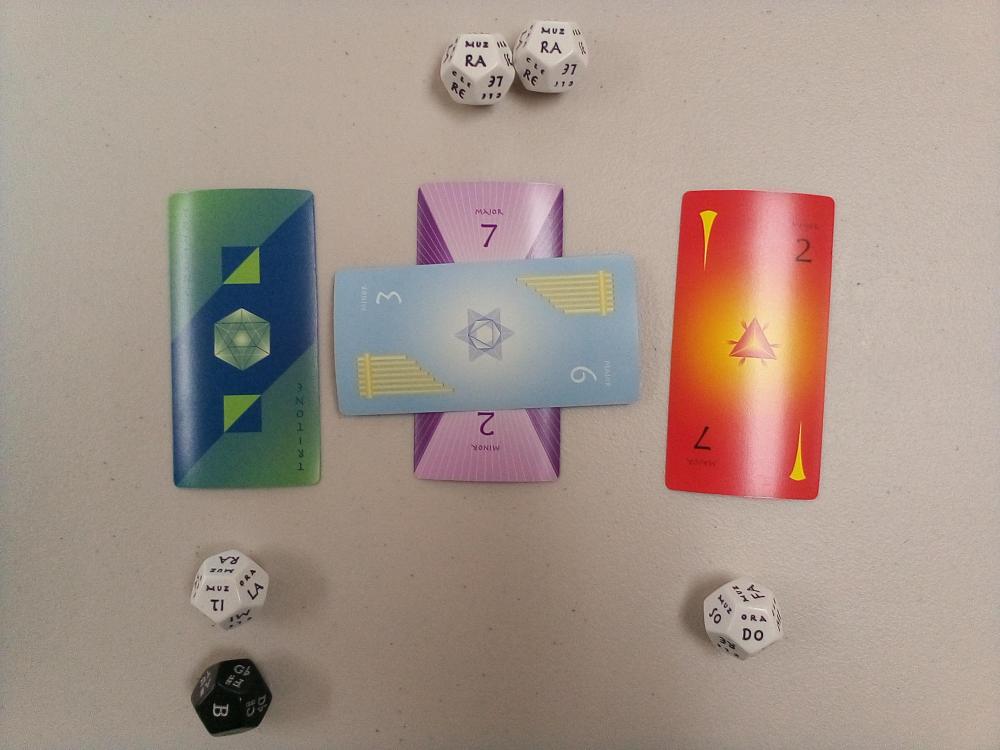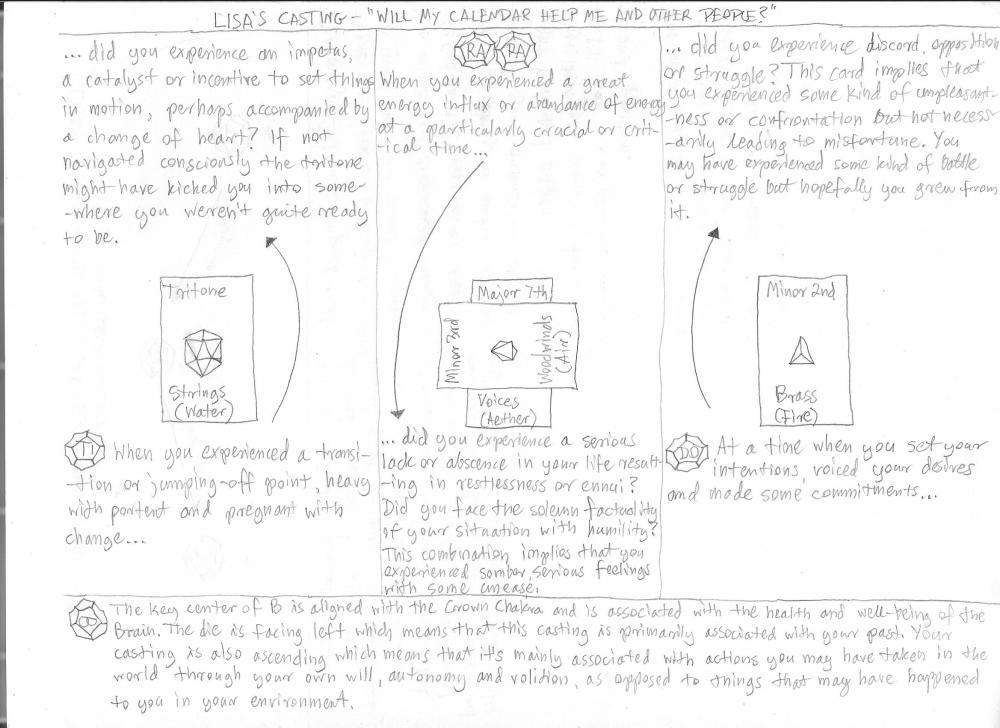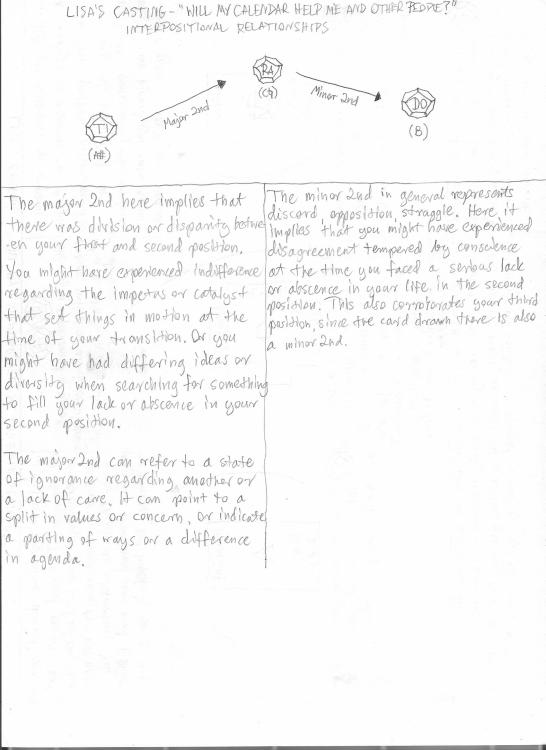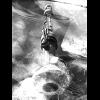All Activity
- Today
-
ada. joined the community
-
Piano Trio in C minor, first movement (draft)
Giacomo925 replied to Giacomo925's topic in Chamber Music
Thank you so much much @murphybridget! Here's to hoping to improve this movement and to be inspired for continuation! Currently I'm thinking a fast scherzo (maybe g major) as a second movement, since the first movement is allegro but mostly eights so (I think) feels kinda pulled back. Then a lyrical adagio (a minor or e minor) as third movement and then a final rondò (c major but with important c minor episodes). But as soon as I have a little time I want to work on this first movement... any feedback on what's most urgent of course super appreciated! -
Cafebabe started following Fantasia in D Major
-
murphybridget started following Piano Trio in C minor, first movement (draft)
-
Piano Trio in C minor, first movement (draft)
murphybridget replied to Giacomo925's topic in Chamber Music
MP3 Play / pause triopf1 SR 0:00 6:14 volume > next menu triopf1 SR > next PDF triopf1 - Full Score You're welcome, and I must say that I enjoyed every minute of listening to your work. -
WindyCloud started following Battle theme for game
-
Battle theme for game
WindyCloud replied to Gabriel Carlisle's topic in Incidental Music and Soundtracks
This is a truly epic battle theme! It really gets the adrenaline pumping and captures the intensity of a fight perfectly. I can imagine myself charging into battle with this music playing in the background - TechToDown.net -
WindyCloud joined the community
-
Lars joined the community
-
As a composer who has worked very closely with a harpist on (admittedly tonal) music, I am very much in agreement with Gardener's approach. I've thought of this approach, before, myself. Yes, it will leave some holes in the 24-TET multi-octave scale, but good planning by the composer will help greatly. I'm only now dipping my toes into the problems of quarter-tone orchestral writing that (hopefully) won't be a disaster. Bowed strings with their unfocused mass (relative to woodwinds, etc.) and vibrato supposedly make for more convincing performances of quarter-tone harmonies. However, I fear that even professional-level players will be aurally disoriented by the intervals. One possible solution is to use a harp (treated in Gardener's way) to provide a subtle undercurrent of solidly plucked pitches to help orient the ears of the bowed string players. Just a thought... That said, I can speak from experience on the matter of the challenge of "mixed scordatura", which is to say scordatura that varies among the individual strings of a multi-stringed instrument: I composed a short duo for violin and viola - both with mixed scordatura so as to facilitate a Pagannini-ish (albeit much slower) simultaneous left-hand pizz with right-hand bowing of just the right pitches, as well as to facilitate certain quick double-stops to effect four-part polyphony (canons) between the two players. To be safe, I provided TWO versions of the score and parts: One version expressed the notes corresponding to standard fingering. The other version expressed the actual sounded pitches. Initially, the producer forwarded only the version that expressed the fingering (not the sound) - and soon I got the panicked e-mail because the players have perfect pitch and were thoroughly confused by the discrepancy between what they saw and what they heard! Fortunately, I asked the producer to send the OTHER version of my score and parts to the players - and bam - an amazingly good performance ensued.
- Yesterday
-
I've added the score.
-
Thanks, so much, Thatguy! It's me. I like to sing through things when they are in my range so folks get a better sense of how the lyrics sit in the music at a first listen. Yes, there was apparently a constant stream of abuse and paternalism while they were on tour. At the same time, they were doing sold out concerts in major venues and performing for the British royal family, so the whole experience was... a lot. There is a good historical record of the whole thing from letters that survived. Katie Manye isn't a well-known historical figure. She was a member of a large musical group, not a solo act, and then she went home and did boots on the ground work that does much good, but doesn't earn headlines. What she said really resonated with me too. The nice thing about this one is it's really just a round of "I don't sing," and "All shall be well," with a verse layered on top for interest, so it sounds a bit complicated but you could teach it to someone who doesn't read music, as a campfire song for instance. I'm so glad you enjoyed it! Thanks for taking the time to listen.
-
Olof Darin started following Sonata 1
-
Thank you for the kind words! Interesting to hear what people think about the somewhat dissonant stuff. I'm quite used to it and as it's my own piece there's always a chance that I perceive it as more coherent and conventional than how others might perceive it. Ultimately I prefer slow moving, easy on the mind kind of music. As for a score... maybe in the future... but I'm ashamed to admit that I find that part of composing to be very painful 😄
-
wack new 'jazzy' thing
Awsumerguy replied to Awsumerguy's topic in Incomplete Works; Writer's Block and Suggestions
Oh, how you flatter me so! 😆 On a side note, I'm definitely not much else other than a subpar pianist outside of composition. I listen to a lot of music from a bunch of different genres and put them together based on what I've heard and feel sounds 'right-ish' to my (relatively inexperienced) ears. I will say that it's a lot easier to do that with a more amorphous genre like funk or jazz, though, than with a more rigidly structured genre like classical music. I guess that's probably how I managed to put together these 'alright' sounding solos despite having no experience with said instruments. I don't really know about my friend's plans for the piece, honestly: he says he's happy enough with just using the MIDI for now (again, it's only a modestly budgeted student film), though I know Musescore's playback on the saxophone is less than competent for high-speed jazz pieces like this (the 'growl' effect, for example, sounds awfully mechanical, and I myself am not a fan). I intend on lowering the fidelity of the sound to give it a 'grainier' auditory aesthetic: that should make it fit with the 'vibe' of improvisational jazz, if you catch my drift. If my friend does plan on getting this performed by his school band, then I'll write him a fake sheet to help his performers out. It'd be pretty hard to pull off these polyrhythms in-performance, I'd say (lol). I'll post the final edited version later at the top once I'm done with it. Thanks for your kind words, they mean a lot to me 😊 -
Music is a challenging, but very rewarding endeavor.
-
PeterthePapercomPoser started following Tomb Raider
-
I'm back yet again with another Muzoracle casting! (Muzoracle is a storytelling/divination tool similar to the Tarot card deck, but with cards with musical concepts and 12-sided Musician's dice and Solfege dice.) This time Lisa asked the Muzoracle if the symbolic calendar she is developing for people with Aphantasia (people who lack the ability to visualize things in their mind) will help them and her: My interpretation of the dice and cards is displayed below. The cards involved are a Tritone of Strings, Major 7th of Voices, Minor 3rd of Woodwinds, and Minor 2nd of Brass. So I decided to write a chamber piece for Cello, female choir (SSA), Clarinet, and 2 French Horns. If you'd like to find out more about Muzoracle and how castings are interpreted go here: https://muzoracle.com/ This time the piece lasts a total of ~1:45. The piece is in B as shown by the black 12-sided Musician's Die in the bottom left corner. The solfege dice landed on Ti (A#), Ra (C natural), and Do (B) and I ornamented the harmony with all the interval cards that were dealt. I also created an extra harmony by stacking all the intervals on top of each other starting at B. This resulted in a B diminished major 7th b9 chord that I sometimes made use of in the piece. Also, the entrances of the various instruments/voices were staggered according to the order in which they were drawn. So Cello starts the piece, followed by the entrances of the voices, then the Clarinet, and finally the French Horns. If you've gotten this far, thanks for reading and I hope you enjoy listening to this short representation of Lisa's casting! Comments, suggestions, or critiques are of course, always welcome.
-
Here's my spin on the 1996 Tomb Raider theme, which I expanded the main melody with my own a bit. Let me know what you guys think of it.
-

Piano Sonata in C "Passio", 1st movement
Thatguy v2.0 replied to PCC's topic in Piano Music, Solo Keyboard
Alright, let's get this out of the way. Why would anyone copy you over Rachmaninoff (which they can for free)? Or Mozart (which they can for free), or Beethoven (which they can for free), or... you get my point? Why the annoying diarrheic PCC over the score? Can't you just put your name as a copyright at the bottom of every page? Even if you want to keep your anonymousness, can't you still do that while saying PCC at the bottom? And if you're that paranoid, post it on Youtube or another platform that won't go under in the near future. Once you post online, your piece is copyrighted. And if you're STILL paranoid, why bother posting a score in the first place??? If you said, "hey, I don't feel comfortable posting the score online", no one would fault you. ANYWAY, I agree with our dear beloved friend Henry. Although, I like your more unique approach to the form, and I think it works. One of my favorite things to do musically is to take a form and expand or revise it in some way. Your piece isn't the "typical" sonata form, but you do a lot of cool, almost improvisatory things in the exposition and other moments that in my eyes make the form more of a guideline rather than a concrete formula. Very cool. I listened to this a few times (mostly without the score 😛), and the repeat was crucial to me. It helped create a picture of the form when I would get lost. Very nice. Just when I thought I was getting lost, and even if the themes felt disjointed in difficulty and material, the repeat made it all work, and helped me know where you were once I heard it. Disjointed material can work together, but maybe in the future I would continue to explore ways to make it bond more seamlessly. For instance, your tempo is very rubato throughout, and if you had more sections where we could feel even something as small as a constant rhythmic pulse could do wonders in making your sections more cohesive. You seem to have a flair for the drama, and those moments were my favorite. All in all, very unique to my ears, and a wonderful performance. I love all of the emotion you pour into this; I can feel it with your playing. Your music is thoughtful and evocative, and I'm excited to continue listening to your playing/music. Well done 🙂 -

Piano Sonata in C "Passio", 4th movement
Thatguy v2.0 replied to PCC's topic in Piano Music, Solo Keyboard
Wow, 4 movements of your sonata? And you recorded all of them? Dude... congrats. Oh ... I see @Henry Ng Tsz Kiu already beat me to it... and he gave feedback on all of the movements? What is he... like everyone's best friend? DAMN Alright, if my bro Henry gave this SO much attention, it will probably BLOW MY MIND, RIGHT??? (I haven't listened yet 😄) I'll check out movement 1 first... brb -
Wow, this is incredible! Is this vst or a recording (you?)... I can't even tell anymore. 😄 This was really moving for me personally. The racism I've experienced is nothing compared to Katie Manye, but the line of "I don't sing for people who don't see me" really resonated with me. There have been years of times where I've played guitar and sang for people who could have cared less how much work and love I've put into my craft. But to put hatred on top of that? I can't fathom, and it breaks my heart she left her love of music to pursue another life, but I don't blame her. I would like to think I would have done the same. And to then live for a career in aiding the sick? What a heroine, eh? ❤️ The music is very cool, and composed really well. I listened with and without the score. Without, whenever I got lost, I loved that you kept the "I don't sing" line going, and then I would catch more. With the score, it looks clean and well thought-out; I can tell this one meant a lot to you 🙂 Well done, this is one of my favorites from you.
-

wack new 'jazzy' thing
Thatguy v2.0 replied to Awsumerguy's topic in Incomplete Works; Writer's Block and Suggestions
Honestly, I love that you wrote all of the solo stuff out. How did you write it? The bass sounds real, is that you? Or is it digital? Idk anymore haha. I'm a guitarist, and I love making my tone sound as much as a GUITAR as possible. I've gone back to single coil pickups because of that. Also, I'm not sure why I'm saying any of this... Yeah dude, this rocks. I'm interested in how this is going to work out though. Are you having people record your composed music, then you're piecing it together with editing once you see the video footage? Or are you just responsible for getting the music side of it down with the instrumentalists, and you have no say so post production? All in all, you give everyone tons of space to solo. I'm curious though... I mentioned the solo writing because a lot of times the players themselves play their own take for a solo, especially with jazz. It's part of their culture. Are your composed notes gospel for the players to play, or is your audio an idea of what you want them to play? It was fun to hear the evolution of this. I don't think you overdid any of the soloing, since this isn't a stand-alone piece, it's for film (right?). Otherwise, a change in key or a varied chord progression would be a cool thought too. 😄 Nice job my guy - Last week
-
For four equal voices, a cappella, this will work equally well for men's or women's voices, or could be used for a mixed choir. Three voices are in canon for all but the end of the piece, while the last provides a verse in an additional musical layer. It marches along at a good tempo for protest. The text explores three different approaches to working toward justice: boycotting the economy of those in power in favor of hands-on work in your community, peaceful self-sacrifice to earn respect and spread your message, and educating people about uncomfortable truths, so that they can base their future actions on an accurate picture of the situation. In 1891, the African Jubilee Chorus embarked on an extended concert tour of England to raise funds to start a college in Kimberley, South Africa. They sang to sold-out crowds, but were also met with constant racism. Choir member Katie Manye declined to participate in future tours, deciding hands-on work for her community was a better use of her time. She dedicated the rest of her life to a career in nursing. Speaking about her decision, she said, "I don't sing for people who do not see me." An anchoress nun, Julian of Norwich was chosen to be walled into a tiny cell of a church until her death as a living sacrifice. At a time when women in positions of power were actively suppressed, particularly by the church, Julian’s cheerful and calm acceptance of her fate earned the respect of her local community and gave her a voice that the authorities couldn't silence due to her ever-growing celebrity and popularity. Although she could not leave, a stream of important visitors came to her to seek her council, and her writings escaped and were published. Dating from the late 1300s, her books are the oldest known works by a female author in the English language and speak of comfort and hope in the face of adversity. One of her most famous quotes was the simple statement, "All shall be well, and all shall be well, and all manner of thing shall be well." A prolific author, scientist, and activist, W. E. B. Du Bois believed speaking truth to power, especially when the truth was uncomfortable, was essential to achieving change. He felt that if we believe in a just society, we must speak up when society falls short, and teach both the good and the bad chapters of our history to have a clear picture from which to move forward. In addition to being one of the most important early voices for civil rights in America, Du Bois helped citizens in Africa and Asia organize for their rights against colonialist powers. The verse of this piece comes from his 'Black Reconstruction in America,' "Nations reel and stagger on their way; they make hideous mistakes; they commit frightful wrongs; they do great and beautiful things. And shall we not best guide humanity by telling the truth about all this…?"
-
This is a suite consisting some of the small musical pieces i have made during this spring. All of the pieces could be developed more. I have used only quite small amount of time for these pieces. But they all have some ideas that are good. Two players and drums could be a good concept. There is melody, accompanient and in some parts have drums. The duration of each part is from 1 to 2 minutes. The total duration is 9 min 21 s. 1. melody 2. polka 3. arioso 4. polka in seven 5. pop-motive 6. party gig I think the two polkas feel to be "forced" to the time signature The time signature in the sixth part "party gig" theme is 21/8 x 5 + 23/8 which makes 128 beats that is equal to 16 x 8 beats. The signature could be thought alternatively as 7/8 x 15 + 9/8. The 5.th part could be interesting to continue, and slightly modify it.
-
Dear all, and with my glacial pace... here's my next attempt at butchering chamber music! a trio for piano, violin and cello. This is not the final/polished version, but all (most) of the elements that I think should be in the finished product are here. So... if there was any feedback on what to change, suggestions to make things more effective or better sounding or less terrible--all very very very welcome as usual. This forum has been really instrumental for my beloved hobby. I think this is my 9th composition and i would have given up WAY earlier without this. In fact, if life weren't so obtusely busy and complicated I would love to take some lessons instead of remaining the perpetual amateur 🙂 And also I would love to be more active in here... Anyways, thanks very much for those who listen and a big hello to everyone! Giacomo
-
Hello Guys, A new music piece with a male vocalist. Here's the lyric: As night falls upon the city's embrace, Neons shimmer like a thousand eyes, And watch over us with silent grace, Beneath the dark and starless skies, oh. It seems the skyscrapers move slowly, Like giants in their timeless stride, In the city's heart, where dreams are unholy, And whispers of secrets, in shadows hide, oh. The red moon's gentle glow, a guiding light, Guilty souls appear in the velvet night, Whispers of dark wild dreams take flight, In the cruel realm where shadows alight, oh. Let us dance beneath the neon haze, In the symphony of the night's embrace, In the darkness, our hearts are in blaze, And in chaos, our souls find their grace, oh. The red moon's gentle glow, a guiding light, Guilty souls appear in the velvet night, Whispers of dark wild dreams take flight, In the cruel realm where shadows alight, oh.
-
@ComposaBoi as well understood the beginning yet still gives a sense of the unknown, slightly unsettling, then the music breaks out I also liked the use of the different degrees of tonality and suspensions
-
Thank you for your thoughtful and complimentary review. Just to clarify, the intended harmonic structure (of the A section or main theme) is mostly a quick journey through the cycle of 5ths (loosely speaking): Em7 - A7 - Dm7 - G7 - Cm - Em7/B - Ab13 - A7 - Dm7 - G7 - C with a few random or nearly random dissonances thrown in. To me it clearly ends on the tonic (ignoring the random dissonances thrown in for laughs) though it's true it starts on 3m. Thanks again.
-
If They May Dance: Grand Waltz for Orchestra
Awsumerguy replied to Awsumerguy's topic in Orchestral and Large Ensemble
Hey @PeterthePapercomPoser, thanks for replying! I can definitely see that. I rewrote this piece from a much older piano-violin duet: at that point, I hadn't considered structure to be anything significant enough to study or follow (don't worry, I grew out of that phase 😉), so that unfortunately translated into the orchestral transcription. My music teacher also said as much when I showed the piece to her: she said it felt as if I composed linearly instead of harmonically. As an orchestrator, that hurt a little, I'll be honest. That being said, I envisioned the piece as being something more of a evocation of the feeling of a waltz instead of being a waltz itself: it acts more as an homage to the musical form than being of that musical form (if that makes sense). Or maybe I'm just bluffing at this point 🙃 But what do you think? I'd love to hear back from you 😄 -
wack new 'jazzy' thing
Awsumerguy replied to Awsumerguy's topic in Incomplete Works; Writer's Block and Suggestions
I'll get that done once I'm satisfied with it; wouldn't want them thinking I was happy with an incomplete work 😉 Also, comments on this new edit, @Thatguy v2.0? I added the saxophone solo, but I feel like I'm adding a little too much mustard on this one. It'd be great to hear from you.

.thumb.jpg.a1bd070fa88caa1c83527ffe77c97a41.jpg)



.thumb.png.8b5b433a341551e913a34392660bc95b.png)






